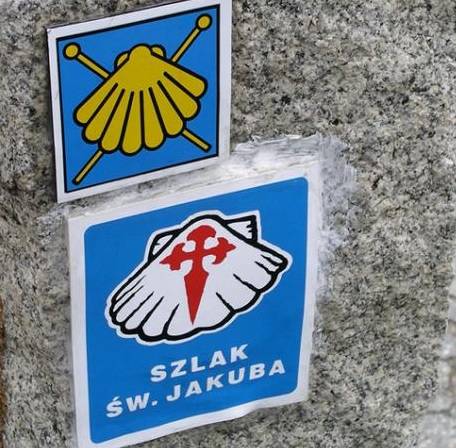Way of St. James
On St. James’ routes

Therefore Luban can be regarded as a real node of Polish pilgrims’ routes leading to Spain. You also have to consider the fact that wandering St. James’ routes goes beyond purely religious aspects. Pilgrim, tourist or a person stumbling across St. James’ routes comes into touch with a rich and varied cultural heritage of the whole Europe. You are wrong if you think that on routes to Santiago all one can see are objects related to catholic religion. In reality, such routes give you the possibility to experience European heritage in its wholeness – equally the sacred and the profane.
So far there have been two books published on St. James’ routes in the Lower Silesia region: „Dolnośląska Droga św. Jakuba” and „Via Cervimontana”.
The first one, written by Emil Mendyk is a richly illustrated guidebook. Its good points are thoroughly prepared text and numerous maps. Very important is also the preface to this book in which the author presents the detailed background of recreation of pilgrimage to Santiago, as well as the message behind this initiative.
The second work mentioned above entitled Via Cervimontana serves a complementary function to the first one. The Latin name Via Cervimontana refers to the Sudeten part of the route – from Jelenia Góra to Lubań. It’s wothr mentioning that the pilgrims’ route does not follow the trunk road No. 30 but runs to the north of it – first through a picturesque Bóbr valley and then through such towns as Pokrzywnik, Radomice, Milęcice, Lubomierz, Gryfów, Biedrzychowice and Olszyna. Author of the book describes the numerous churches and residences of the nobility that can be found along this route. Although the work is not lengthy, it is still worth reading, as it may encourage you to travel along this particular St. James’s route.
 Explore
Explore




